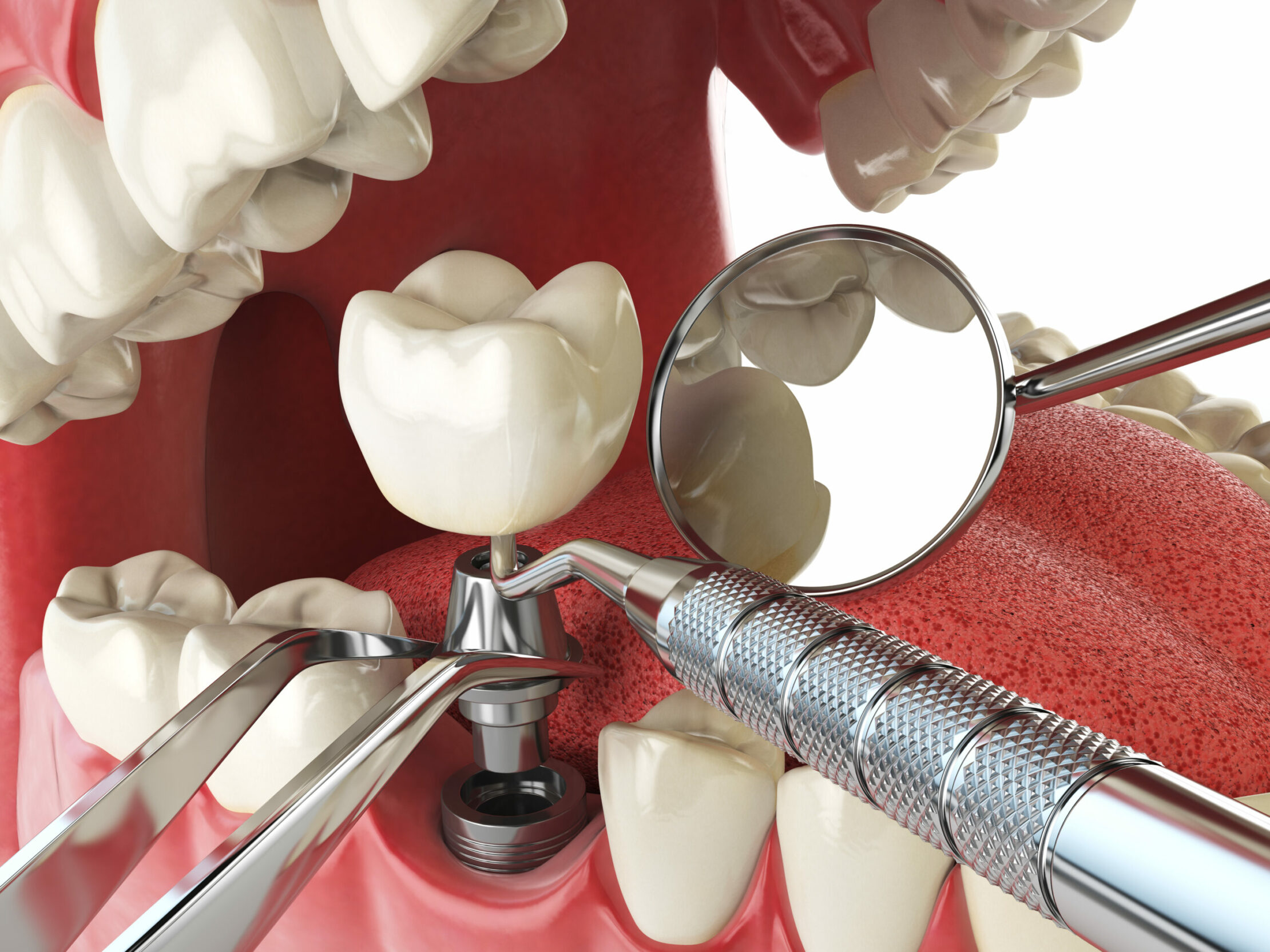Restore Your Confidence with Dental Implants Kent: Experience You Can Depend On
Experience the Most Current Technologies in Dental Implants Innovation
As the field of dentistry proceeds to develop, the advancements in oral implant technology have actually been nothing brief of exceptional. The integration of modern technology is transforming the capability of dental implants, promising enhanced outcomes and individual satisfaction.
Advanced Products for Enhanced Longevity
In the world of oral implants technology, the assimilation of advanced products has actually considerably added to enhancing sturdiness and longevity of these critical dental prosthetics. The use of products such as titanium alloys, zirconia, and ceramic compounds has changed the field by providing raised biocompatibility, strength, and resistance to rust.
Titanium alloys are extensively made use of in dental implants because of their phenomenal strength-to-weight ratio, corrosion resistance, and compatibility with the human body. These alloys make sure the security and longevity of the implant by standing up to the forces applied throughout speaking and chewing, offering a reliable service for individuals looking for sturdy tooth substitutes.
Zirconia, a sort of ceramic product, has actually gained popularity for its biocompatibility and natural tooth-like appearance. Its high strength and resistance to wear make it a suitable choice for dental crowns and bridges, enhancing the overall looks and capability of the dental implant.

Digital Imaging for Exact Positioning
The development of dental implants technology has actually better progressed with the combination of electronic imaging methods, guaranteeing accurate placement of these prosthetics for ideal practical and aesthetic outcomes. Digital imaging plays an important role in the planning and positioning of dental implants by offering detailed 3D photos of the individual's jawbone structure. This technology permits dental practitioners to examine bone density, situate essential structures, and plan the specific setting and angle for dental implant positioning with exceptional accuracy.
By making use of digital imaging, dental practitioners can produce virtual medical guides that offer as a roadmap during the dental implant placement treatment. These guides are tailored for every person, taking right into account their unique makeup and the desired end result. This level of accuracy not only boosts the success rate of oral implant treatments but additionally lowers the threat of issues.
Additionally, electronic imaging allows dental experts to visualize the last prosthetic restoration before the real placement of implants, enabling for meticulous planning and making certain that the outcome fulfills the patient's aesthetic assumptions. Overall, the combination of electronic imaging modern technology has reinvented the area of dental implants, offering clients a much more foreseeable, efficient, and patient-specific treatment technique.

Minimally Intrusive Surgical Methods


Developments in surgical approaches have led to the growth of minimally intrusive methods in the field of dental implantology. These techniques intend to minimize injury to the person, reduce healing times, and improve overall therapy end results. Minimally intrusive surgeries entail smaller incisions, specialized instruments, and advanced imaging modern technologies to exactly place oral implants with minimal disruption to surrounding cells.
One trick aspect of minimally invasive strategies is using led surgical procedure, where 3D imaging and computer-aided layout software application are employed to intend the dental implant placement with great precision. This enables for a more foreseeable result and can frequently eliminate the requirement for comprehensive flap surgical procedure.
Additionally, developments in products and implant layout have additionally added to the success of minimally invasive approaches. Implants with improved surface homes promote much faster osseointegration, lowering the recovery time needed prior to the prosthetic remediation can be positioned.
3D Printing for Customized Solutions
Using 3D printing innovation in dental implantology permits the development of highly tailored services customized to private patient needs and physiological variants. This innovative modern technology enables dental specialists to design and fabricate dental implants navigate to this website with extraordinary accuracy and precision. By utilizing digital imaging methods, such as cone beam of light calculated tomography (CBCT), thorough 3D models of the client's mouth can be created to guide the implant planning process.
One of the crucial benefits of 3D printing in oral implantology is the capacity to develop patient-specific implants that flawlessly fit the one-of-a-kind anatomy of each individual. This personalized method assists enhance the general success and durability of the dental implant by making sure ideal fit and placement. In addition, 3D printing enables the manufacturing of intricate geometries and detailed frameworks that would certainly be tough or difficult to accomplish utilizing standard production techniques.
Moreover, 3D printing innovation allows dental practitioners to simplify the implantation procedure, minimizing surgical treatment time and improving general client experience. With its ability to create tailored solutions promptly and successfully, 3D printing is reinventing the area of dental implantology, offering individuals cutting-edge treatment alternatives and improved results.
Integrated Technology for Improved Functionality
Applying cutting-edge innovation in oral implantology enhances performance and accuracy, elevating the requirement of treatment for clients going through dental implant procedures. Integrated innovation plays a crucial role in enhancing the total success and resilience of oral implants.
In addition, the integration of computer-aided style and computer-aided production (CAD/CAM) modern technology enables the development of personalized implant repairs with remarkable accuracy. CAD/CAM systems use electronic impacts to design prosthetics that perfectly fit the client's special makeup, ensuring pop over to this site optimal comfort and functionality. Additionally, the use of robotic-assisted surgical procedure in implant placement improves precision and lessens the threat of human mistake.
Verdict
Finally, the most recent advancements in oral implants modern technology deal boosted durability through advanced materials, precise placement with electronic imaging, minimally intrusive medical techniques, tailored remedies with 3D printing, and boosted performance with incorporated innovation - Dental implants Kent. These advancements in dental implants innovation are revolutionizing the area and giving people with more effective and reliable treatment alternatives for recovering their smiles and oral health
The integration of innovation is transforming the capability of dental implants, assuring improved end results and client satisfaction.
The development of oral implants innovation has actually even more progressed with the integration of digital imaging strategies, guaranteeing specific placement of these prosthetics for ideal functional and visual outcomes. Minimally invasive medical treatments include smaller sized incisions, specialized tools, and progressed imaging technologies to exactly position dental implants with very little disturbance to surrounding tissues.
Implementing innovative modern technology in dental implantology additional reading boosts functionality and accuracy, elevating the requirement of treatment for patients undertaking implant procedures. Dental implants Kent. Integrated modern technology plays an important duty in improving the general success and durability of dental implants